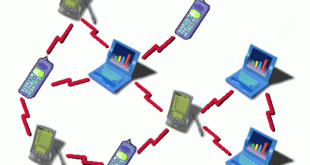An Internet Protocol address (IP address) is a numerical ticket allotted to each device contributing in a computer network and requires Internet for communique. Check out the Benefits of IP Address.
Page Contents
An IP address helps two major tasks
- Network edge identification
- Site addressing
Its part has been categorized as follows
- A name shows what we hunt for.
- An address specifies where it is placed.
- A route shows how to reach there.
IP Address
Discovery of IPv4: A basic step
Internet Protocol designers demarcated an IP address by means of a 32-bit number and the system is identified as Internet Protocol Version 4 (IPv4) which is still in use nowadays.

Due to the massive progress of the Internet and the expected depletion of available addresses, a fresh version of IP has been introduced as IPV6, address of 128 bits, was established in 1995.
In 1998 IPv6 was standardized like RFC 2460. Its deployment has been enduring since the middle of 2000s.
IP addresses are binary numbers, nevertheless they are generally stored as text files and showed in human readable symbolizations, such as 1726.15.157.1 for IPv4 and 2001:db6:0:1834:0:587:8:2 for IPv6.
IP address space location is managed by Internet Assigned Numbers Authority all around the world. IANA are representatives’ of five regional Internet registries to assign IP address chunks to Internet registries working locally and other individuals.
IPv6: a Replacement
There are two versions of Internet Protocol are in practice. One is IP Version 4 and other is IP Version 6. Both versions describe an IP address in a different way. Due to its occurrence, the standard term IP address habitually denotes to the addresses definite by IPv4.
The version order gap among IPv4 and IPv6 formed from project of number 5 to experimental Internet Stream Protocol in 1979 which yet never talk about IPv5.
IPv4: First in IP Networks
In IPv4, an address contains 32 bits which bounds address space by 4294967296 (232) likely exclusive addresses. An IPv4 asset certain addresses for distinct purposes such as private networks or multicast addresses.
IPv4 addresses are signified in dot-decimal notation which contains four decimal numbers, every one going from 0- 255, detached by dots. Each part signifies an assembly of 8 bits of address. In few cases of procedural writing, IPv4 addresses may be obtainable in numerous octal, hexadecimal or binary representations.
IPv6: a Dynamic Discovery
IPv4 address space get quickly exhausted regardless of management techniques which provoked the task force of internet engineers to discover new technologies to enlarge the Internet capability of addressing. The perpetual solution was thought to be a reform of Internet Protocol.
The subsequent generation of Internet Protocol that proposed to exchange IPv4, was ultimately called as Internet Protocol Version 6. The address magnitude was amplified from 32 – 128 bits. This is considered sufficient for the predictable future, even with a substantial assignment of network chunks.
The new address space offers the potential for an extreme of 2128, or around 3.403×1038 unique addresses mathematically.
The huge quantity of IPv6 addresses permits large chunks to be allotted for specific tasks and, where suitable, to be accumulated for effective routing. There is no need to have composite address conservation techniques because of a great address space.
 Tricks Window Technology Zone – Complete Technology Package for Technology News, Web Tricks, Blogging Tricks, SEO, Hacks, Network, Mobile Tricks, Android, Smartphones etc.
Tricks Window Technology Zone – Complete Technology Package for Technology News, Web Tricks, Blogging Tricks, SEO, Hacks, Network, Mobile Tricks, Android, Smartphones etc. 

